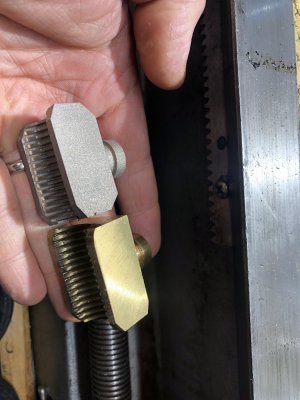- Joined
- Apr 30, 2015
- Messages
- 12,446
It's more economical to make a composite piece with a threaded brass/bronze section and steel for the body portion- your choice
of methods to attach the two together: screws, brazing, epoxy
Make it so the two pieces fit/lock together for strength in the long direction- I'll do a sketch to show what I mean
something like this:

of methods to attach the two together: screws, brazing, epoxy
Make it so the two pieces fit/lock together for strength in the long direction- I'll do a sketch to show what I mean
something like this:

Last edited:

